Just so you know, as an Amazon Associate we earn from qualifying purchases made via bold red links, buttons or images.
Last Updated on December 9, 2023
If you’re not familiar with Turkish coffee, you’re missing out on a unique style of coffee. Turkish coffee is known for being particularly strong, with its own aromas and flavors that come from the special way it’s prepared.
You need a special coffee grinder to make Turkish coffee, and we’ve dived into the market to identify the best Turkish coffee grinder available. If you’re looking to try Turkish, you’ll want to get your hands on a quality grinder.
Our recommendation is the JavaPresse Manual Coffee Grinder. This grinder has the best all-around performance of any of the grinders we tried, and performance is the most important factor if you’re looking for good, easy-to-make Turkish coffee.
JavaPresse Manual Coffee Grinder
In total, we looked at five Turkish coffee grinders that are actually wildly different, and it’s possible that you’ve got something else in mind. So let’s take a quick look at all five…
Top 5 Turkish coffee grinders at a glance
Best Turkish coffee grinders in detail
1. JavaPresse Manual Coffee Grinder
https://m.media-amazon.com/images/I/41GnIw4pf9L.jpg
Pros:
- Good sized grinding chamber means you can grind for multiple cups of Turkish coffee at once
- High quality craftsmanship and durability
- Versatile grinder that can be used for other styles of coffee, but very capable of handling Turkish coffee grinding
Cons:
- Its appearance isn’t as ornate or visually pleasing as some of the other grinders
- There’s a bit of a learning curve for setting the grind fineness levels, as they are not explicitly labeled
Check availability
While the JavaPresse Manual Coffee Grinder doesn’t have the same traditional Turkish look as some of the other grinders on this list, its performance makes up for its lack of charm.
Boasting a sizeable grinding chamber and a number of settings for fineness of grind, this grinder can produce consistent coffee grounds at several levels, including Turkish coffee size.
The grinder has a utilitarian, plain stainless steel look. If you want a grinder that also looks decorative or exotic, you may want to look elsewhere. But in terms of the all-around quality of the grind, it’s hard to beat this grinder. It’s also made to last.
2. Zassenhaus Espresso and Mocca Grinder
https://m.media-amazon.com/images/I/31DttvDoObL.jpg
Pros:
- A versatile grinder that can make not only Turkish coffee but other types as well
- Excellent craftsmanship and durability
- Aesthetically pleasing—looks good on a bar, countertop or shelf
Cons:
- More expensive than most other models
- Not specialized for Turkish coffee, and so takes one extra step
Check availability
The Zassenhaus Espresso and Mocca Grinder isn’t labelled explicitly as a Turkish coffee grinder. But this grinder can absolutely get the job done. In order to achieve a level commensurate with a Turkish coffee grind, you first grind the beans at a coarser setting, then switch to fine and regrind them.
The Zassenhaus is the most well-crafted of the grinders, and it’s made with real durability and quality. If you’re planning on not only making Turkish coffee but other types of coffee, it’s a great pick. However, if you’re planning on only making Turkish coffee, a more specialized grinder can get the job done more efficiently.
3. Manual Brass Coffee Mill Grinder by Sozen
https://m.media-amazon.com/images/I/41ol1iZuU4L.jpg
Pros:
- Smooth, easy-to-operate process produces a pleasant grinding experience
- A nice looking, authentic Turkish coffee grinder looks great as a set piece
Cons:
- Reports that this product took an unusually long amount of time to arrive once ordered, though we had no issue
Check availability
This Manual Brass Coffee Mill Grinder by Sozen has an authentic look and can handle grinding Turkish coffee quite nicely. The grind is relatively smooth and the grinder is ergonomic, making for a comparatively easy grind. As with many other Turkish coffee grinders, this grinder can also be used for grinding spices like pepper.
Note that there is a 9-inch and a 7-inch version of this grinder. If you’re making a single cup of Turkish coffee, the 7-inch should have you covered. However, if you’re looking to make multiple cups, go with the 9-inch so you don’t have to grind in multiple batches.
4. Crystalia Turkish Style Coffee Grinder
https://m.media-amazon.com/images/I/61Zp15gBthL._SL500_.jpg
Pros:
- Excellent as an object of art or a conversation starter, with an intricate patterned design
- Grinds quickly and smoothly, handling a good-sized batch of beans
Cons:
- Some users have expressed long-term durability concerns
Check availability
The Crystalia Turkish Style Grinder is probably the nicest looking of all the grinders we’ve reviewed, and it gets the job done, too. It’s got a surprisingly large chamber capable of grinding relatively large batches of coffee beans, and it’s able to create a fine, powdery Turkish coffee grind.
It also grinds among the fastest of all the grinders, making this a good pick if you’re looking to get to your coffee as quickly as possible.
The main knock on this grinder is that it may not have the same long-term durability as certain other grinders. While it’s certainly not going to break down right away, online reviews suggest it may be particularly susceptible to wear.
Our verdict
If your priority is simply grinding Turkish coffee as quickly and effectively as possible, then the JavaPresse is your best bet.
If you want a beautiful grinder to sit in a prominent place in your home, go for the Crystalia grinder. It has the look of a traditional Turkish grinder, and if that’s important to you, it’s a good choice.
If you don’t necessarily want to make Turkish coffee all that often but want a versatile grinder, the Zassenhaus may be the one for you. But the JavaPresse is just as versatile, is better suited to Turkish coffee grinding, and is considerably less expensive.
What to look for in a Turkish coffee grinder
When buying a coffee grinder with the aim of making Turkish coffee, it’s especially important to keep in mind that Turkish coffee grinding is distinct from other ways of grinding coffee.
Even espresso is made with grounds significantly coarser and larger than Turkish coffee, and the ground coffee you use to make conventional coffee is far too large.
As a result, coffee grinders not made specifically for Turkish coffee usually won’t have settings fine enough to grind for Turkish coffee. If a product isn’t specifically marketed for grinding Turkish coffee, you are taking a risk by buying it.
For other styles of coffee, you might find yourself torn between purchasing a manual grinder or an electric grinder. But with Turkish coffee, as a general rule you want to stay away from electric grinders.
A manual grinder geared toward grinding Turkish coffee will give you the best possible results. Within this field, you’ll want a model that’s durable and well-constructed, so that you consistently get an even, fine grind.
What is Turkish coffee?
What distinguishes Turkish coffee from other styles of coffee is its unique preparation method.
Turkish coffee is made without using any kind of filter. Instead, the ground coffee beans are placed directly in the water as the coffee is brewed.
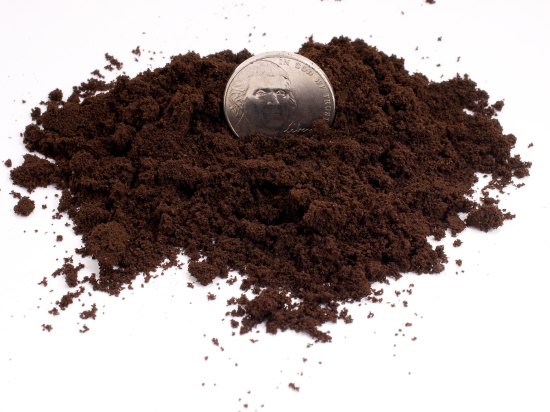
As a result, Turkish coffee needs to be ground extremely fine—essentially, to a powder. This is where the Turkish coffee grinder comes into play. If you were to grind the coffee the same way you do for other styles of coffee, the grounds would be far too rough and large for making Turkish coffee.
Once the coffee is ground down to powder, you place about a tablespoon of grounds plus the desired amount of sugar into a pot for brewing. Sugar is never added after the coffee is brewed, and milk or cream are never added to Turkish coffee at all.
Turkish coffee is renowned for its intense flavour and high caffeine content, and has been a staple of Turkish culture for over 500 years. The serving of Turkish coffee to guests is the centrepiece of traditional Turkish hospitality, and a custom of reading one’s fortune through the grounds left at the bottom of a cup is another common Turkish practice.
Grinding Turkish coffee
European grinders aren’t made to grind coffee down to Turkish coffee standards. Turkish grinders use different burr spacings to produce the finest grade of ground coffee.
When making Turkish coffee, there’s no removal or separation process for the grounds. They’re directly mixed with the water while the coffee is brewed, and then you drink them. If your coffee isn’t sufficiently ground down, you’ll be slurping up large fragments of grounds, with a lot of grittiness.
That’s what makes a quality grinder so essential for making Turkish coffee.
How to make Turkish coffee
Turkish coffee making is a multi-step process, with very particular rules. The only area in which you have a lot of flexibility is the amount of sugar you add. Otherwise, you’ll want to stick quite rigidly to steps in this video, which we’ll break down further after you watch it.
Grinding the coffee beans
Making Turkish coffee starts with the grinding process. You’ll use your coffee grinder, which should be made specifically for Turkish coffee. Make sure you reduce the beans to a powder-like consistency.
Brewing the coffee
Turkish coffee uses a very precise ratio of water to coffee, and one that’s more concentrated than other styles of coffee. You’ll want to use 14 grams of ground coffee with 120 millilitres of water. Or, half an ounce of coffee grounds to half a cup of water.
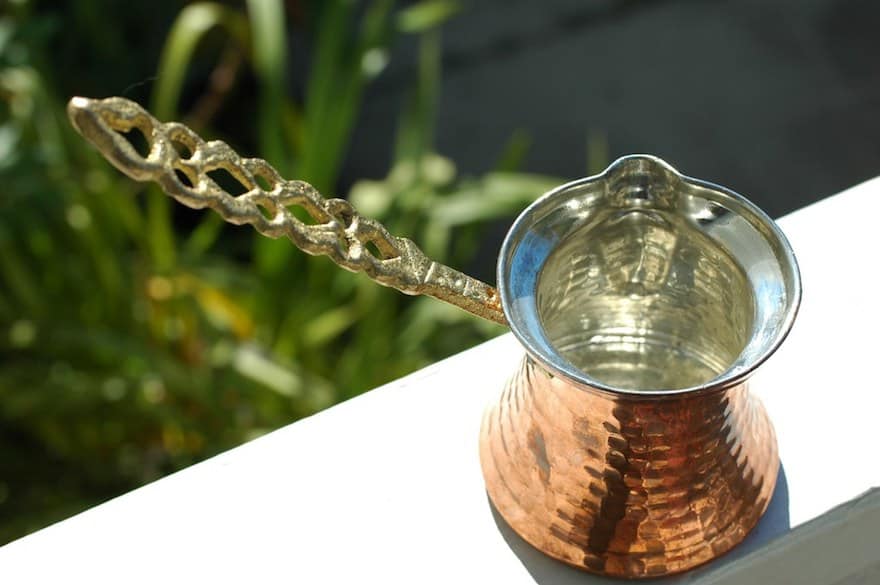
Place the ground coffee and water into your receptacle for brewing the coffee. Traditionally, Turkish coffee is brewed in a special container called either a Cezve or an Ibrik. But you can use any open-mouthed container in a pinch.
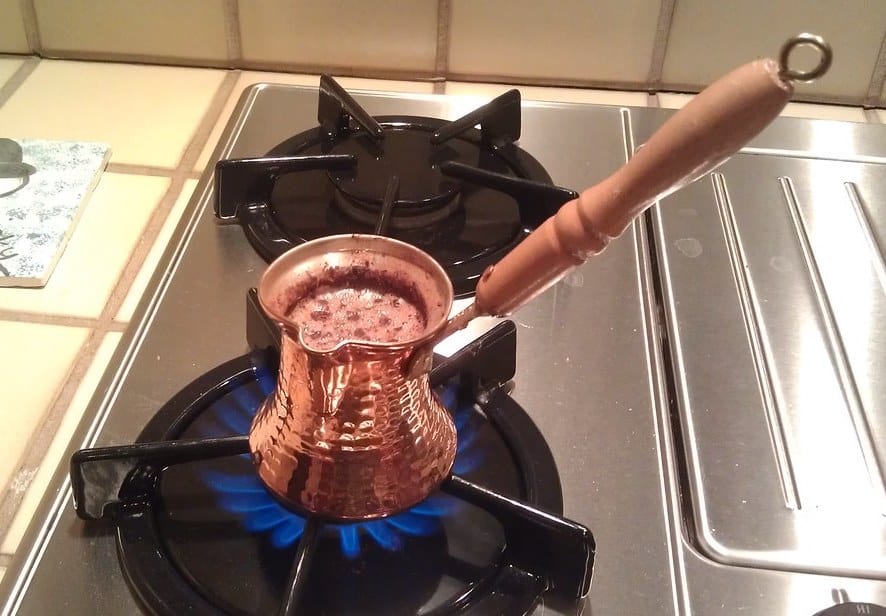
Heat the coffee and water in the Cezve until you start to see small bubbles forming, but before the water begins to boil.
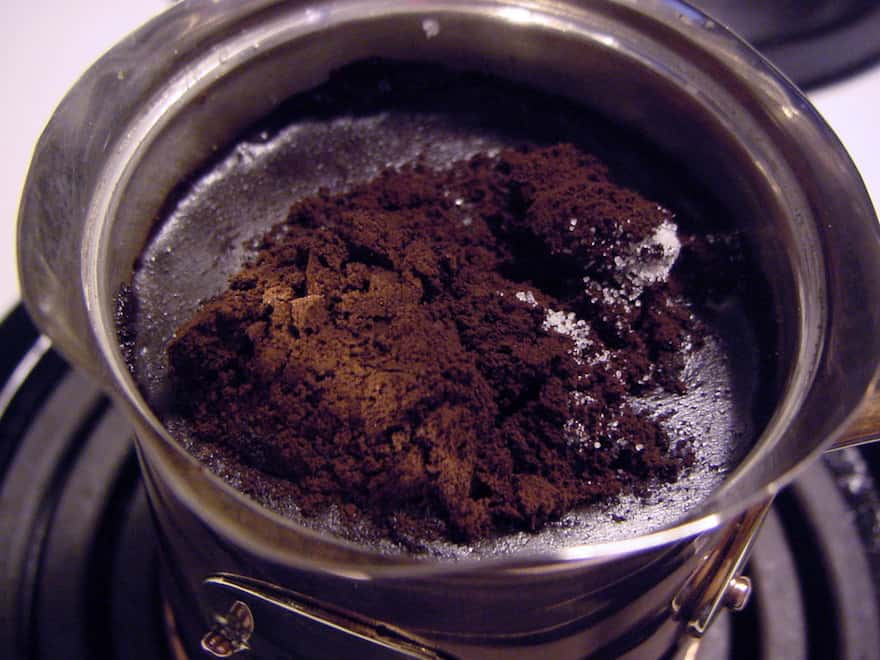
At this point, stir to mix the grounds with the coffee. You do not want the coffee to boil, as this will take away from the subtlety of the flavours.
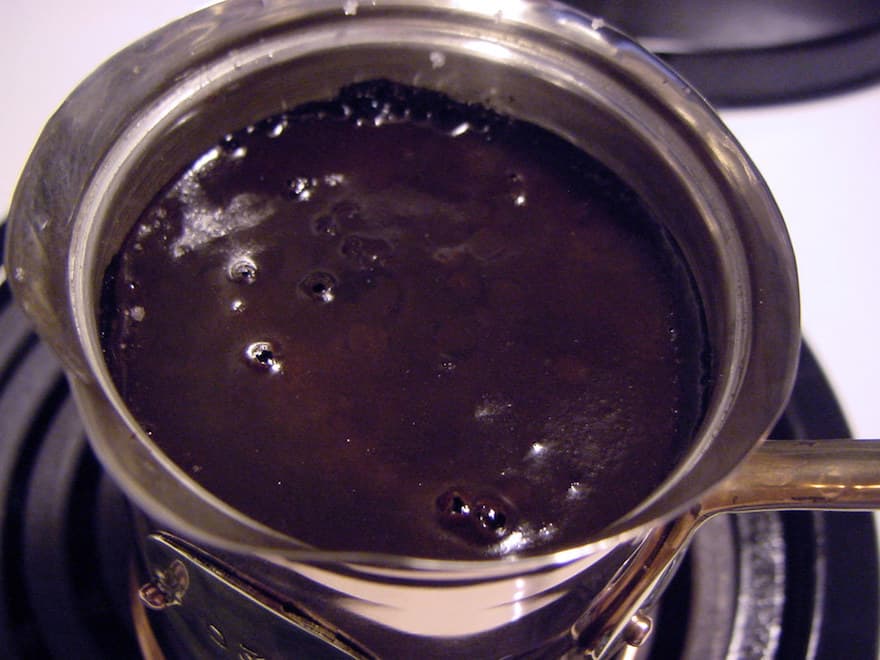
When the coffee approaches boiling, foam should be forming at the top. The foam is very important to traditional Turkish coffee, and you want to create a solid amount of foam. Take the Cezve closer and further from the heat to keep it from boiling but allowing foam to form.
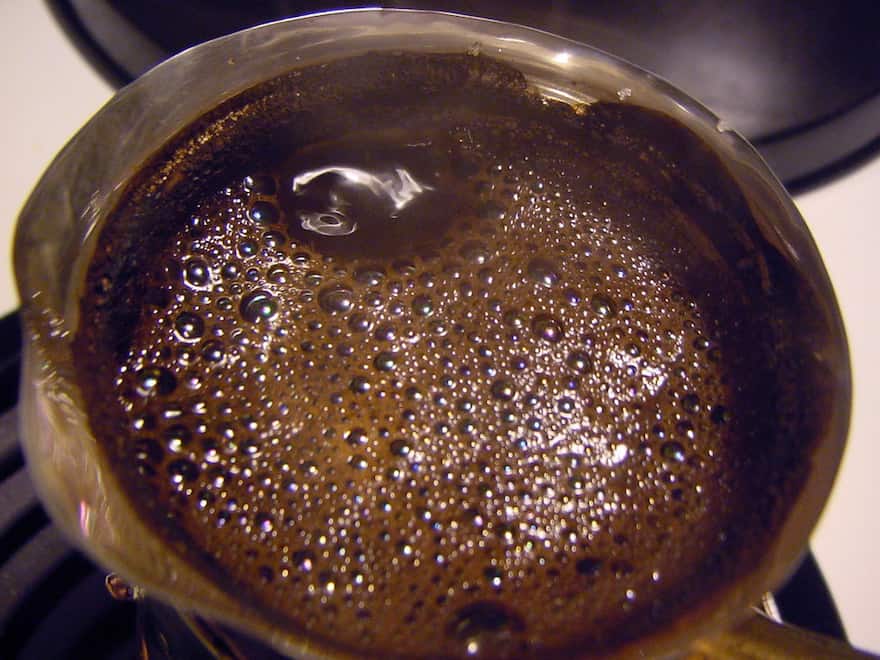
Once you’ve repeated that process three times, the coffee is ready to pour.
Letting the coffee sit
The final step before drinking your Turkish coffee is to let the coffee sit for two to three minutes. This is important for two reasons. Number one, it cools the coffee to a drinkable temperature. Number two, it allows the grounds to settle at the bottom of the cup and reduces the grittiness.
Once your coffee has rested for a few minutes, it’s ready to drink.

We hope you’ve found this roundup of the best Turkish coffee grinders helpful. If you come across another one that you think deserves to be on the list when we update it next year, be sure to let us know in the comments below and we will give it a spin—and another, and another, and another…


